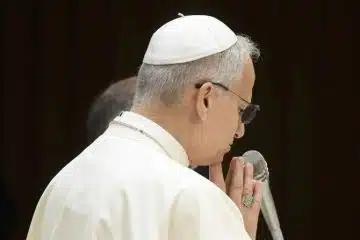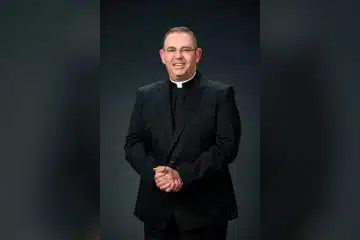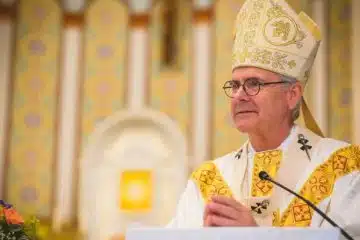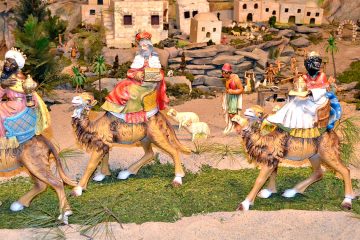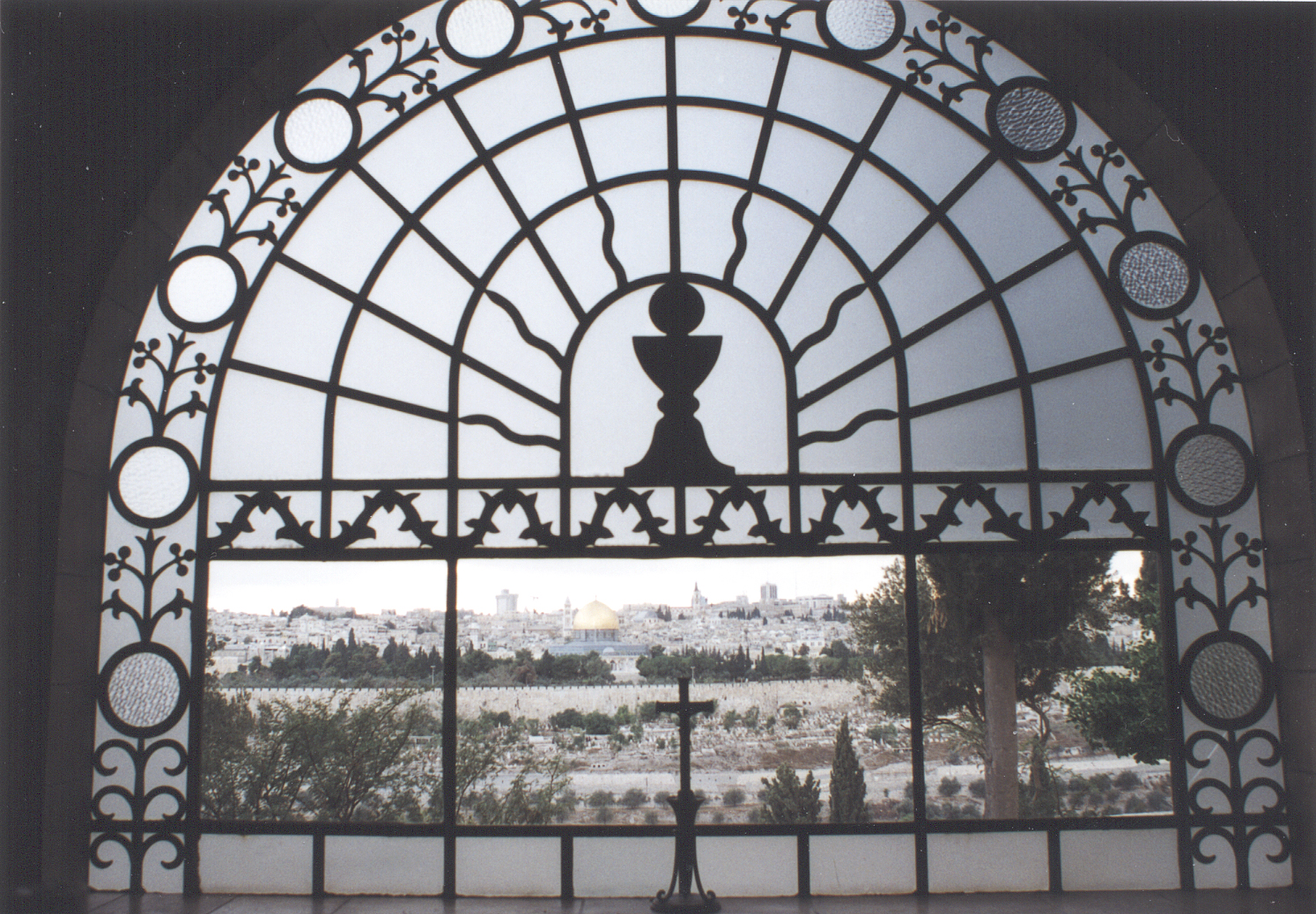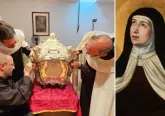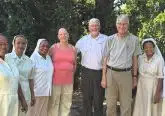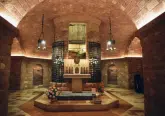Relics of St. Thérèse of Lisieux begin U.S. tour at basilica named in her honor
Ann Arbor, Michigan, Oct 2, 2025 / 17:02 pm
The faithful are gathering in Michigan, where the relics of St. Thérèse of Lisieux are on display at the National Shrine of the Little Flower Basilica in Royal Oak, near Detroit. A Mass of installation was celebrated on Oct. 1 by Archbishop Edward Weisenburger and rector Father John Bettin as the beautiful, glass-encased reliquary was present near the altar.
In an interview with CNA, Bettin said the saint’s bones and reliquary first visited the United States and the basilica named for her over a quarter of a century ago, in 1999. The 2025 tour is the first stop of 40 in 11 states. According to the StThereseusa2025.com website, her relics will go to California; Washington, D.C.; Texas; Wisconsin; and various Carmelite convents through December.

Bettin pointed out that the “simplicity and depth” of the saint’s spirituality has a growing appeal that transcends national boundaries. “She is a doctor of the Church and one of the most beloved saints of all time. The last time she was here, approximately 70,000 pilgrims visited the shrine in one day. We are planning for even bigger crowds,” he said.
Over 400 volunteers are supporting the shrine’s staff to accommodate the many pilgrims who will visit from Oct. 1–8. During a recent visit, volunteers could be seen signing up duty rosters while others were busy festooning the beautiful sanctuary with roses.
Born in Alençon, France, on Jan. 2, 1873, Thérèse Martin was the daughter of Louis Martin and Zélie Guérin. When Zélie died, young Thérèse and her family moved to Lisieux in northern France. When her sisters entered the Carmel of Lisieux, she wished to follow them but was turned down because of her youth. But during an audience with Pope Leo XIII, she was granted permission. She entered the Carmel in 1888 and made her religious profession in 1890.
During her nine years in the Carmel, she was ultimately wracked with doubt. Even so, she wrote fervently about her love of God, much like the Carmelite saints Teresa de Avila and John of the Cross. Following her death from tuberculosis at the age of 24 in 1897, her Carmelite sisters gathered her writings, which have since formed the basis of “The Story of a Soul,” a book that has been translated into numerous languages and millions of copies.

Bettin spoke warmly of the special devotion that Chaldean Catholics, for example, have for the saint, and said he expects many to visit the relics. Father Patrick Setto, a priest of Iraqi origin of the Chaldean Catholic Church in the Detroit area, told CNA that he and his community are grateful for being able to celebrate their liturgy at the basilica. He noted that he recently held a silent retreat for adults, centering on the life of St. Thérèse and her Little Way.
In an interview, Setto said his relationship with St. Thérèse goes back to his childhood. When he was in the sixth grade in 1999, he and his mother waited for hours to venerate the relics. He recalled that when the reliquary came around in a procession, he wanted to reach out and touch it.
“But I was so short, I couldn’t get to it. So, a man — out of nowhere — lifted me out of the pew and I got to touch it,” Setto said. “Soon, 26 years later, I will celebrate a Mass in the shrine with her reliquary there.”
“It’s a very powerful, special blessing that God has bestowed on me,” he added. He never saw the man again, he said.
The priest said that Dominican and Redemptorist missionaries to Iraq spread devotion to St. Thérèse in the early 20th century. The Catholics in Iraq feel a connection to her amid their suffering during war and Muslim domination, and during their flight as refugees. In a 2014 video message, Pope Francis referred to Iraqi refugees as “the reeds of God,” in parallel to the saint’s spirituality of perseverance and faith despite adversity.
Bettin also has a special relationship with St. Thérèse. As the youngest of 11 children in his family, he was often chided as “spoiled,” much like the saint, who was also the youngest in her family. In her memoir, St. Thérèse recalled that when she was 14, she was tearful upon overhearing her father say that it would be the last Christmas she would receive gifts typical for children.
“St. Thérèse’s spirituality began as a little girl when she was not sure that there was a world outside of herself. But she had an epiphany, if you will, on Christmas in 1886 when she experienced a profound conversion,” Bettin said. “She realized there was a world outside, and she gained a great devotion for God. It was not so much for herself, but for others.”
Both priests called on Catholics to come to the shrine to venerate the relics. When Bettin was asked what Christians can expect from venerating the relics, he said: “It’s interior for each pilgrim who comes, whether they are parishioners, from Detroit, or other countries.”
Some may even see miracles, said Setto, who cited the Old Testament, where in 2 Kings 13:21, a dead man was brought back to life after his body touched the bones of the prophet Elisha. “Come and see her,” he said.
Dominican Sister Mercedes Torres, who serves as vocations director of the Dominican Sisters of Mary, Mother of the Eucharist in nearby Ann Arbor, invited the world, especially young people, to visit with the saint while her relics are in the U.S.
In a video, Sister Mercedes said: “Faith is essential to who we are. But it’s really that call of love that we have all been called to live. St. Thérèse is making herself known to young people in the country right now. Go and see her as she is making herself known, and you can make yourself known to her. Make your intentions known to St. Thérèse. It is such a gift, and I want everyone to participate in that gift.”
Setto said that those who are discouraged in their search for closeness to God can go to the writings of the saint and experience renewal. When people experience shame and discouragement, he said St. Thérèse can help them “refocus on God’s mercy rather than their weakness, just as St. Paul says that in my weakness, God is able to be strong in me. She was able to flesh that out in a very human and practical way that is easy to understand.”


